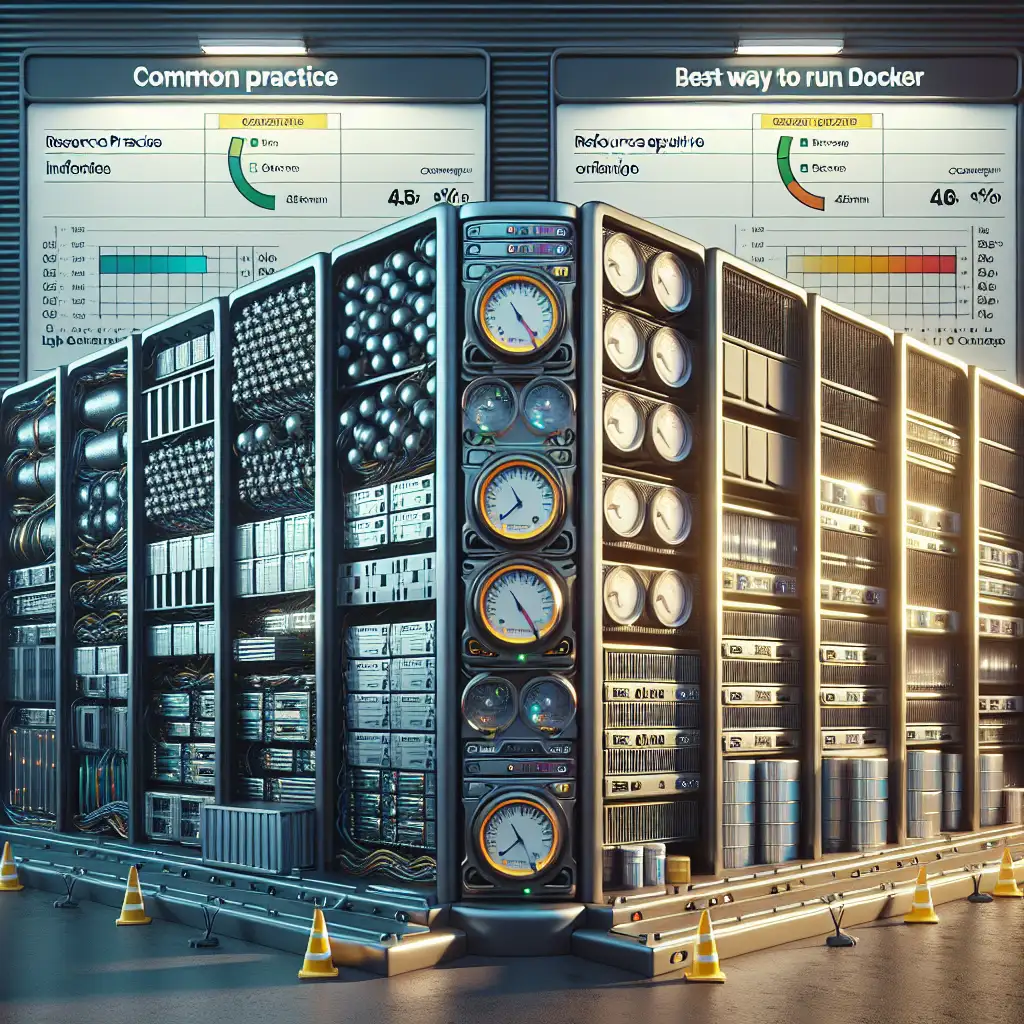Optimizing Container Performance: The Best Way to Run Docker with Minimal Overhead
Most Docker tutorials focus on functionality, but the real game-changer is how you run Docker to squeeze out performance and cost savings. Let’s cut through the noise and zero in on practical tactics that seasoned engineers swear by.
Efficient Docker usage directly impacts application performance, resource consumption, and operational costs. Mastering Docker with minimal overhead ensures smoother deployments and better scalability.
In this post, I’ll walk you through proven strategies to optimize your Docker containers, helping you run them faster, leaner, and cheaper — whether you’re running a single container or managing multi-node clusters.
Why Minimal Overhead Matters When Running Docker
Docker itself is lightweight compared to traditional virtual machines, but overhead can still creep in from several sources:
- Unnecessary layers in your images making builds slow and images bulky
- Over-provisioned resources, leading to wasted CPU or memory
- Inefficient container runtime settings causing slow startup times
- Verbose logging and debugging tools eating up I/O
- Poor volume mount strategies resulting in sluggish file operations
When running at scale or in production environments, these inefficiencies multiply costs and risk performance bottlenecks.
1. Start with Lean Base Images
It’s tempting to build off widely known images like ubuntu or node, but they tend to be bloated. Instead:
- Use Alpine Linux-based images (
alpine) for minimal footprint (5 MB vs 100s MB). - For language runtimes, choose slim variants (
python:3.11-alpineinstead ofpython:3.11). - Strip unused packages and files during your image build.
Example: Minimal Node.js Image
FROM node:18-alpine
WORKDIR /app
COPY package.json package-lock.json ./
RUN npm ci --production
COPY . .
CMD ["node", "index.js"]
This simple change reduces image size significantly, leading to faster pulls and less memory usage at runtime.
2. Optimize Your Dockerfile for Caching & Size
Docker builds layer-by-layer; each instruction creates a new layer cached for subsequent builds. Order your instructions so that the least frequently changed files are first.
- Put dependency install steps before copying the entire source code.
- Clean up package caches after installs.
RUN apk add --no-cache gcc make libc-dev \
&& npm install \
&& apk del gcc make libc-dev \
&& rm -rf /var/cache/apk/*
This avoids leftover build-time dependencies inside runtime images.
3. Limit Container Resource Allocation Explicitly
By default, containers inherit all resources from the host machine which can cause contention.
Use flags like --memory, --cpus (when running with docker run) or Kubernetes resource requests/limits for explicit control:
docker run --memory=512m --cpus=1 myapp:latest
This prevents containers from starving the host or other services, ensuring optimal resource distribution.
4. Use Native Linux Containers and Avoid Nested Virtualization
The most performant Docker setups run directly on Linux hosts leveraging kernel namespaces—no hypervisors involved.
Running Docker on Windows or Mac often involves a lightweight VM (such as HyperKit or Hyper-V), adding overhead. Consider deploying your critical workloads on Linux servers or cloud VMs.
5. Minimize Volume Mounts & Avoid Overusing Bind Mounts in Production
Bind mounts (linking host directories into container) are great during development but can degrade performance if used extensively in production because of synchronization overhead between host filesystem and container overlayfs.
Prefer:
- Copying assets into the image during build time if data is static.
- Using named volumes for persistent data managed by Docker rather than host-mounted directories.
Example with named volume:
docker volume create app_data
docker run -v app_data:/var/lib/app/data myapp
6. Manage Logging Strategically
Verbose logging inside containers eats CPU cycles and disk I/O. Configure logging drivers to limit log size:
docker run --log-driver=json-file \
--log-opt max-size=10m \
--log-opt max-file=3 myapp:latest
Alternatively, offload logs using centralized logging solutions like Elastic Stack or Fluentd rather than keeping everything inside containers.
7. Leverage Multi-stage Builds for Complex Apps
For apps that need compilation or bundling steps (e.g., Go binaries, React apps), use multistage builds to separate build environment from runtime image:
# Builder stage
FROM node:18-alpine as builder
WORKDIR /app
COPY package*.json ./
RUN npm install
COPY . .
RUN npm run build
# Final stage - minimal runtime
FROM nginx:stable-alpine
COPY --from=builder /app/build /usr/share/nginx/html
This technique drastically cuts down final image size since none of the build tools end up in production images.
8. Tune Your Container Runtime Settings
If you’re using container runtimes beyond default Docker Engine—like containerd or CRI-O—ensure they’re optimized for your workload profile by adjusting parameters such as seccomp profiles, cgroups configuration, and root filesystem options.
Kubernetes users should also consider pod QoS classes for priority-based resource guarantees.
Summary Checklist for Minimal Overhead Docker Runs
| Action | Impact |
|---|---|
| Choose Alpine/small base images | Faster pulls, reduced memory & disk usage |
| Optimize Dockerfile layering | Efficient caching & smaller image sizes |
| Set explicit resource limits | Stability & fairness under load |
| Use Linux hosts where possible | Avoid nested virtualization overhead |
| Minimize bind mounts | Improve file I/O performance |
| Limit & configure logging | Reduce unnecessary CPU/disk use |
| Use multi-stage builds | Smaller production images without build dependencies |
| Tune container runtime parameters | Maximize security & efficiency |
Final Thoughts
Docker is an incredible tool — once you master how you run it rather than just what it runs with — you unlock serious performance gains and cost savings. Apply these strategies incrementally as you develop your workflows.
Try these out today on a small test app—you’ll be surprised how much faster and lighter your containers get!
If you want me to share specific optimization examples tailored to your stack or CI/CD pipelines, just drop a comment below. Happy containerizing!
Written by [Your Name], passionate software engineer focused on scalable DevOps workflows.
